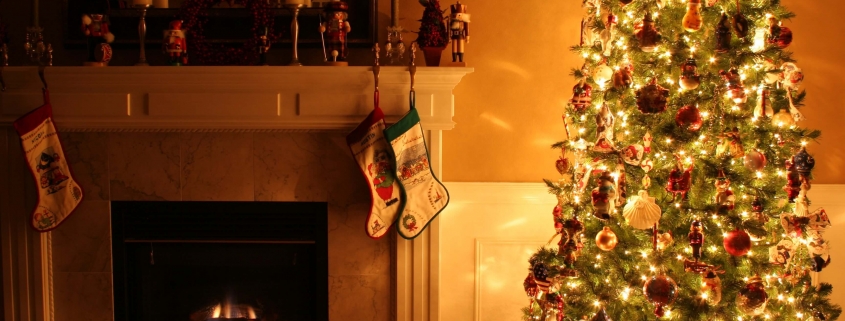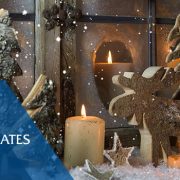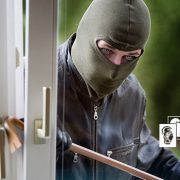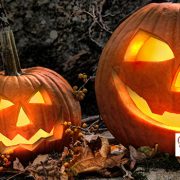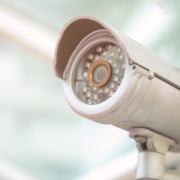The Best Tips for Holiday Home Safety
The holiday season is a time to be festive, but it’s also a time to consider home safety, especially regarding fires.
About 30% of home fires occur during December, January, and February, according to the National Fire Protection Association (NFPA), resulting in 38% of home fire deaths. The NFPA also found fires involving Christmas trees and seasonal décor cause twice as many injuries and five times more fatalities than the average home fire during the winter holidays. 1
Cooking, heating, and open flames, including those from fireplaces, contribute to the danger. Christmas trees, garlands, and other holiday decorations are also sources of fires. While fire isn’t the only hazard this time of year (falls, electrocutions, and poisonings are high on the list), there are fire safety tips that can protect your home, family, and guests.
Below are tips to avoid dangerous situations and ensure children and adults remain safe this holiday season.
Christmas Tree Safety
An average of 260 home fires per year start with Christmas trees. As a result of these fires, there are about 12 deaths and $16.4 million in property damage.2 To avoid your household becoming one more statistic:
- Choose your tree wisely: If you purchase a live tree, make sure it is green, which means it’s fresh. The needles should not break when you bend them and shouldn’t easily come off the branches. An artificial tree doesn’t guarantee fire safety despite the absence of live trimmings. If you choose to purchase one, look for a label that states it is fire-resistant. Non-combustible materials will prevent it from easily burning.
- Place your tree carefully: Set up your tree away from heat sources such as fireplaces, portable heaters, and radiators. It should be out of the way and not block doorways, so there’s no danger of someone accidentally knocking the tree over. If the tree is live, fill the stand with water, as a dry one will be less flame-resistant. Also, cut a few inches off the trunk to expose fresh wood that will more effectively absorb water.
- Be careful lighting and decorating your tree: Many Christmas tree fires have electrical To avoid a problem, inspect the lighting and check for cord damage. Any damaged lights and strands should be thrown away.
Turn off lights and decorations before bedtime, or install an automatic timer, and use a ground fault circuit interrupter (GFCI) to lower the shock risk. To avoid an overload, don’t connect more than 70 strings of 50-bulb mini lights or 300-600 strings of LED lights (50 bulbs each) to one circuit; don’t overload extension cords either.
- Properly dispose of the tree: Christmas trees dry out the longer they’re in your home and become more flammable over time. A lot of tree-related home fires occur in January for this reason. When a dried-out Christmas tree burns, a complete flashover can occur in less than a minute, as found during a burn test conducted by the U.S. Consumer Safety Commission.3
Holiday Outdoor Lighting
Whenever you install holiday lights outside your home:
- Place them near only non-combustible, flame-resistant, and flame-retardant
- Check the label to ensure the product is certified for outdoor use.
- Avoid damaging a cord’s wire insulation (use hooks or insulated staples rather than nails or tacks).
- Plug outdoor electrical cords and decorations into a GFCI circuit to avoid shocks from improperly grounded
- Even if a light string has been used before, look for damage before plugging it in.
Candle Safety
Candles cause one-third of all home decoration fires each year, whether used for decoration or during outages. Most home candle fires happen on Christmas Eve, Christmas Day, and New Year’s Day. 4 Fortunately, they can be easily prevented.
- Use flameless candles: They can be as decorative as traditional candles; except they operate on batteries. Just remember to turn them off when you leave the house.
- Don’t let a candle burn unattended: Never leave the room with a candle burning, even for a few minutes. Blowing it out easily avoids a potentially hazardous
Also, exercise caution when using candles to decorate your home. They should be at least 12 inches from any flammable item. And, use a sturdy candle holder to prevent them from tipping over.
Holiday Entertaining
To ensure the safety of your family and guests, keep in mind the following tips for entertaining:
- Test your smoke detectors and alarms before the holiday (make sure they can be heard in the bedroom, halls, and everywhere else in your home).
- Make sure your carbon monoxide detector is working.
- Have a fire escape plan and inform visitors of what this plan is when they arrive.
- Keep an eye on the kitchen to make sure cooking appliances don’t catch fire.
- Store matches and lighters up high, locked in a cabinet, and out of reach of children.
- Use large, deep ashtrays and check them often for burning materials.
Chimney & Fireplace Safety
Failure to clean chimneys is a major contributor to home heating fires, according to the National Fire Protection Association. A professional chimney sweep can take care of the problem. It’s best to hire one that is certified by the Chimney Safety Institute of America, who can thoroughly inspect and clean both your chimneys and fireplaces. They can check any wood-burning stoves as well.
You can also address a few safety factors on your own, such as:
- Clearing debris from the fireplace: Logs and firewood quickly burn into ashes, which should be cleaned up to reduce flammable material that can collect in the chimney. Also, open the damper before any fire is lit.
- Use safe materials: Avoid using painted or pressure-treated wood. All the fuel available in the fireplace should be consumed; otherwise, the fire will burn too slowly, and hazardous materials can build up in the chimney flue.
- Set up your fire properly: By placing larger logs on the bottom, topped by a cross-layer of smaller ones and crushed newspaper and kindling, you can have a hotter, cleaner fire. This “top-down burn” method works by lighting the newspaper and letting the flame do the rest.
Don’t Forget About Home Security
Fire and electrical safety should be your top priorities this holiday season. Fire/smoke/carbon monoxide alarm systems are available for a complete home environment monitoring solution. But you also don’t want to skimp on security, as home break-ins and theft are on the rise this time of year too. Whether you’re entertaining at home or traveling, you can depend on Boyd & Associates for state-of-the-art security systems and 24/7 alarm monitoring services.
We’re trusted throughout Southern California and provide everything from simple touchscreen controls to video surveillance systems, door and window sensors, pet-friendly motion detectors, and window break detectors.
For advice on the best systems for your home this holiday season, and for professional installation, call Boyd & Associates at 888-919-3326 or contact us online today.
Sources:
- https://www.esfi.org/resource/holiday-data-and-statistics-359
- https://www.esfi.org/resource/holiday-data-and-statistics-359
- https://www.nfpa.org/Public-Education/Fire-causes-and-risks/Seasonal-fire-causes/Winter-holidays/Holiday-fires-by-the-numbers
- https://www.usfa.fema.gov/downloads/pdf/publications/holiday_infographic.pdf
- Managing Security for Easter Gatherings & Increased Foot Traffic - April 10, 2025
- Why Homeowners Are Investing in Security Systems in 2025 - March 27, 2025
- Protect Yourself from Tax Season Scams - March 10, 2025

